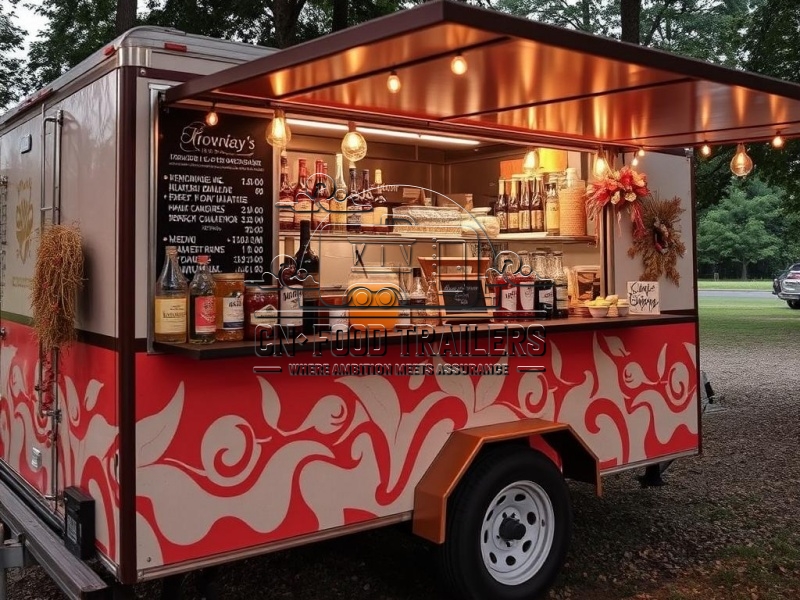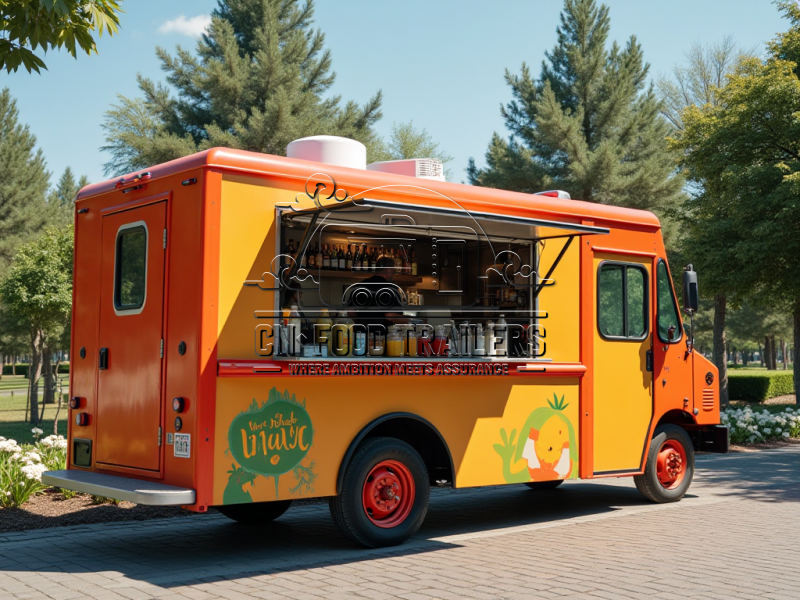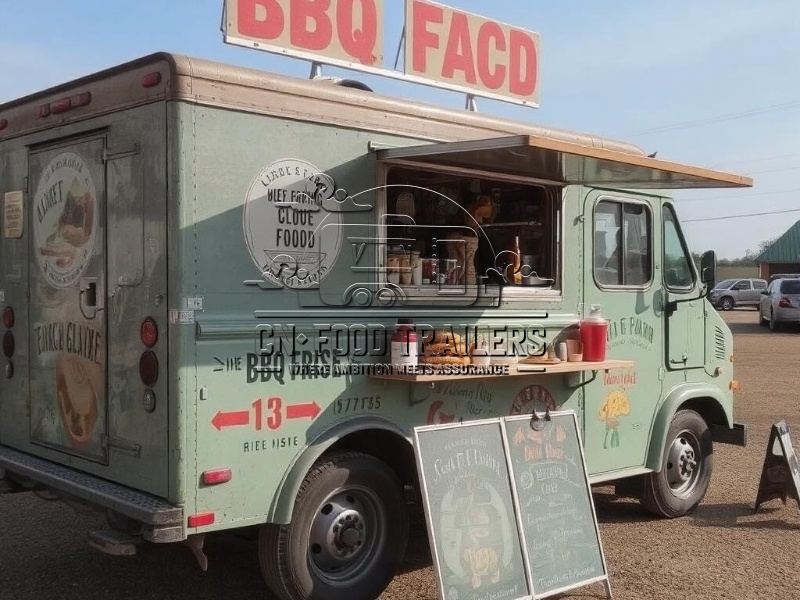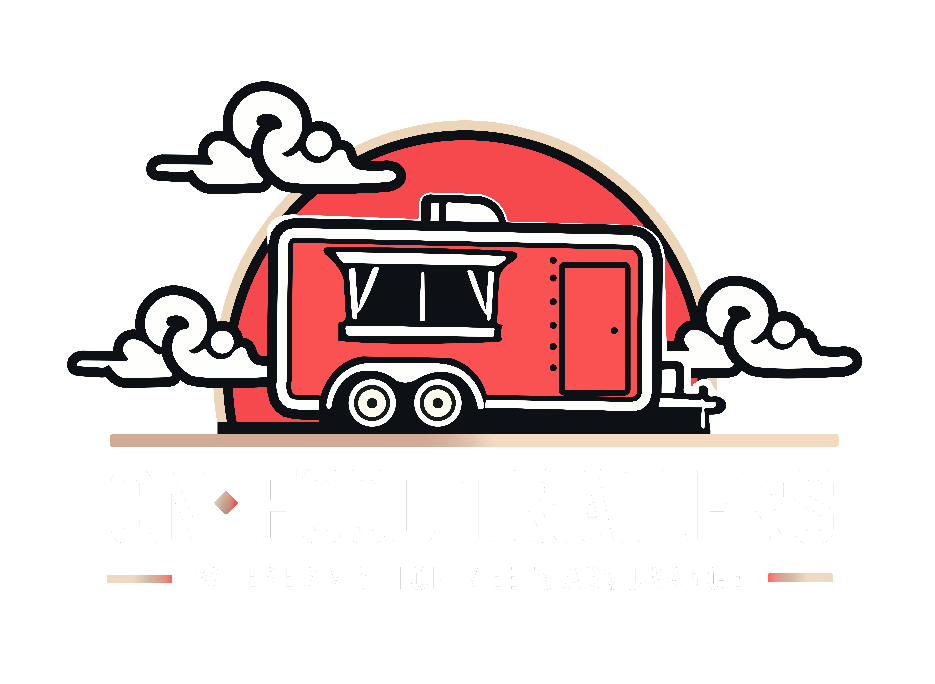The appearance of Hot Dog Food Trailers usually uses highly saturated colors (such as bright red, bright yellow, neon pink) with exaggerated cartoon hot dog patterns, neon signs or retro graffiti to create a strong visual impact. Some food trucks adopt an open window design, so that customers can directly see the whole process of hot dogs from grill to packaging, which enhances interactivity and appetite. The giant hot dog model on the roof, the hanging colorful flags or LED light strips make it the focus of the street, and even become the “Internet celebrity check-in background” on social media. The trailer design (which can be towed by a vehicle) enables it to be quickly deployed in different scenes, while the windproof and rainproof shell and independent power supply system ensure the stability of all-weather operation.

Core Features
1.”Extreme Speed Food Delivery” Street Efficiency
The hot dog food truck takes “3-minute food delivery” as its core competitiveness, and achieves efficient operation through standardized processes and pre-prepared ingredients (such as pre-baked bread and vacuum-packed sausages). Whether it is the commuter rush during breakfast time or the hungry crowd after the midnight ball game, customers can quickly get a steaming hot dog. Some food trucks offer a “self-service sauce station” to allow customers to freely mix ketchup, mustard, hot sauce and even kimchi according to their taste.
2.Global flavors and creative mix and match
The traditional American hot dog (ketchup + mustard + pickles) is still a classic, but modern food trucks are more keen to integrate multiple cultures. For example:
- Japanese teriyaki hot dog: teriyaki sauce + seaweed shreds + bonito flakes
- Mexican spicy hot dog: avocado sauce + corn chips + chili chopped
- Korean kimchi hot dog: spicy cabbage + cheese + honey mustard sauce
- Even “vegetarian hot dog” (plant-based sausage + hummus) or “luxury version” (lobster meat + black truffle sauce) are launched to meet different dietary needs.
3.Scenario experience and theme marketing
Food trucks often adjust menus and decorations according to the scene. For example:
- Sports events: launch “fan package” (hot dog + beer + French fries), and paint the body with team logos.
- Music festivals: match fluorescent sauces and mini hot dogs to attract young people.
- Children’s activities: provide cartoon-shaped hot dogs (such as bear bread + star sausages), paired with fruit juice drinks.
Internal equipment
1.Core cooking equipment
- Rotary sausage grill: evenly heat sausages, crispy skin and juicy inside.
- Frying pan/grill: heat bread, fry bacon or onions and other ingredients.
- Steam insulation box: keep the temperature of hot dogs and ingredients to prevent the taste from drying out.
2.Storage and preparation system
- Refrigerator: store perishable ingredients such as raw sausages, cheese, and vegetables.
- Dry shelves: store bread, sauce packets, tableware, etc. in categories.
- Quick freezer: store pre-prepared ingredients (such as frozen French fries, chicken nuggets) and expand the menu.
3.Hygiene and safety
- Stainless steel workbench: rust-proof and easy to clean, in line with food safety standards.
- Washbasin and disinfectant: ensure employee hygiene.
- Wastewater treatment system: discharge kitchen wastewater in compliance with regulations to avoid pollution.
4.Energy and intelligence
- Independent generator/on-board battery: support off-grid operation and adapt to outdoor scenes.
- Smart thermostat: monitors the temperature of the sausage grill and incubator to prevent food spoilage.
- Mobile payment terminal: supports scanning code to order and contactless payment to improve efficiency.

Application
1.Urban Street and Market Economy
- In Times Square, New York, Shibuya Crossing, Tokyo, or Covent Garden, London, hot dog trucks are “energy stations” for tourists and office workers. For example, Gray’s Papaya in New York is famous for its affordable hot dogs, while Tokyo’s Tokyo Dog attracts food lovers with luxurious ingredients (such as wagyu and foie gras).
2.Sports and Entertainment
- At football, baseball, rugby and other events, hot dog trucks are the “standard” for fans. For example, during the Super Bowl in the United States, the sales of off-site food trucks can reach thousands per day; in European football leagues, fans cheering with hot dogs and beer have become part of the culture of watching games.
3.Music Festivals and Outdoor Parties
- At events such as Coachella and Glastonbury, hot dog trucks, mobile bars, and snack stands together form a “food matrix”. Some food trucks offer “mini hot dog skewers” or “hot dog wraps” for easy eating while walking.
4.Business activities and brand cooperation
- Corporate conferences and brand pop-up stores often cooperate with hot dog trucks to launch customized packages. For example, car brands offer “spicy hot dogs + energy drinks” in test drive events to attract young consumers; film companies customize “themed hot dogs” (such as “Minions” banana-flavored hot dogs) to promote new films.
5.Campus and community services
- At school sports events, community markets or construction sites, hot dog trucks meet the needs of the crowd with affordable prices and convenient services. For example, they provide “large hot dogs + iced cola” for construction workers and “healthy version” (whole wheat bread + low-fat sausage) for students.






Leave A Comment